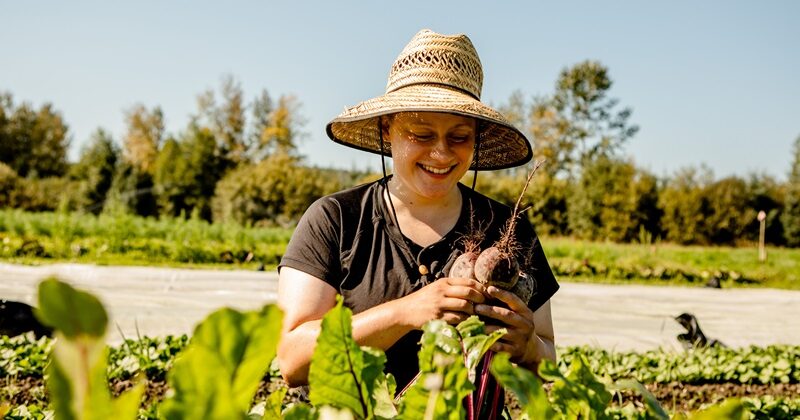Lessons from Winter Plants
As the winter sun grows increasingly meager into November, so does our crop diversity here at the farm. Beds of cauliflower, broccoli, and Brussels sprouts have given all they can and are turned over to cover crop to replenish the fertility of the soil. This grassy mixture of oats, triticale, vetch, and crimson clover sways across the fields like a green sea as the warmth and light dwindle.
Some of the plants start to bolt, moving into their next life cycle, redistributing their energy away from the leaves and roots to produce seeds and a flowering stem. Bright yellow flowers have begun to sprout up from our mizuna. Heads of radicchio have transformed into towering trees spilling into the aisles, making them unusable. As much as we do to control the atmosphere of the farm, the plants consistently remind us of their own autonomy, ignoring our schedule and desire for maximizing lucrative produce. As winter descends, as leaves fall away and rot, the plants are spreading their seed, looking ahead toward survival. Toward living on.
Despite the harshness of the coming season, there are many crops that are built to withstand such conditions. Potatoes, beets, and carrots avoid the cold, living safely beneath the dirt. The kales with their sturdy leaves and stems can withstand the frosts more easily than their softer green counterparts like spinach and salanova lettuce. The cabbages tuck themselves inside their layers. The radicchios appear to be nothing but slime on the outside, but after peeling back the rot, full heads of rich, colorful, healthy plant lie within.
In a field of decay we are reminded of the preciousness of life. Of survival and the unwavering perseverance of a species in its quest to live on. Winter, though cold, dark, and difficult, provides an important reminder of just how the resilient prevail.
~Hailey

